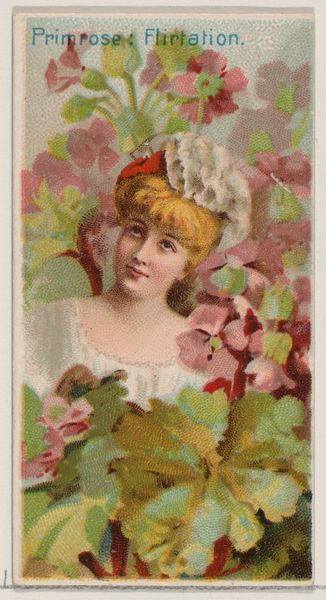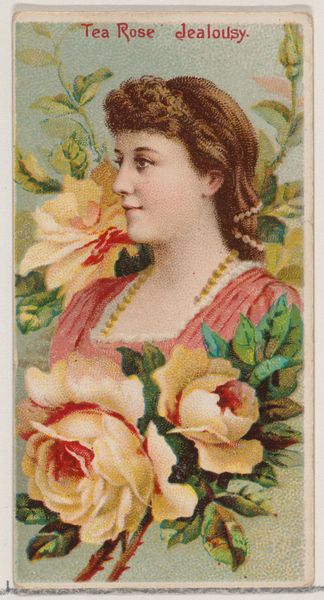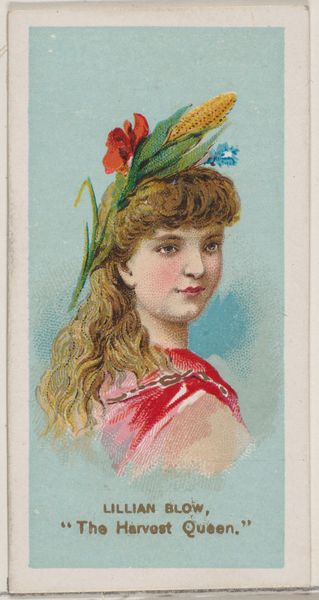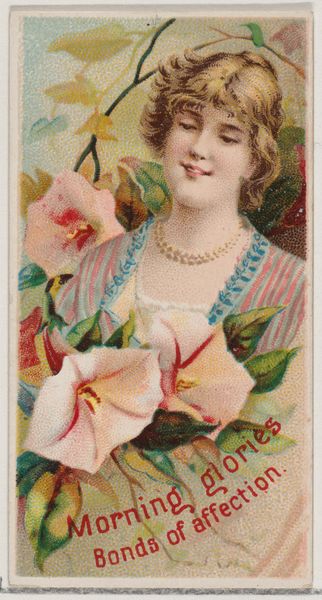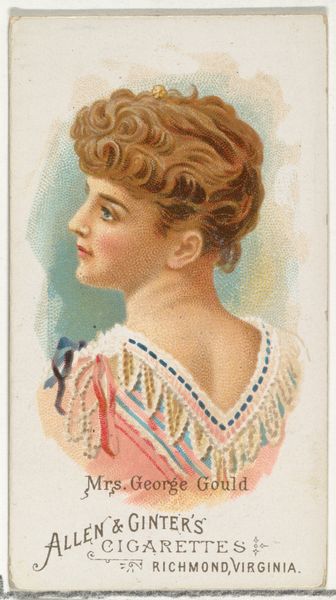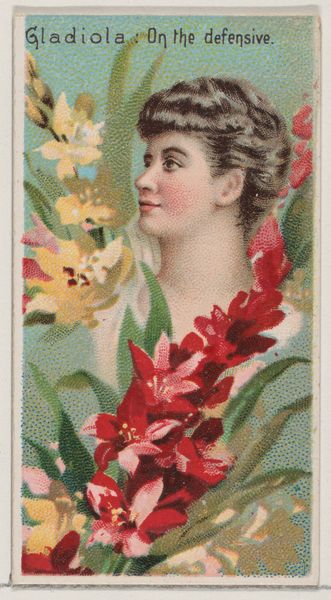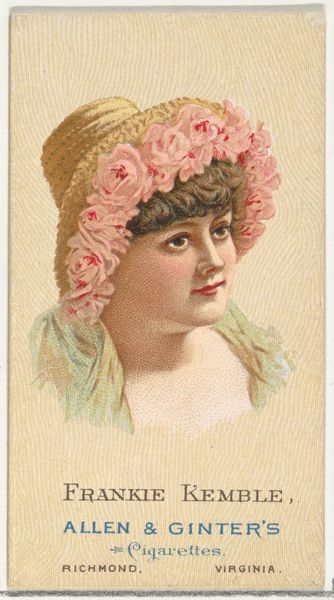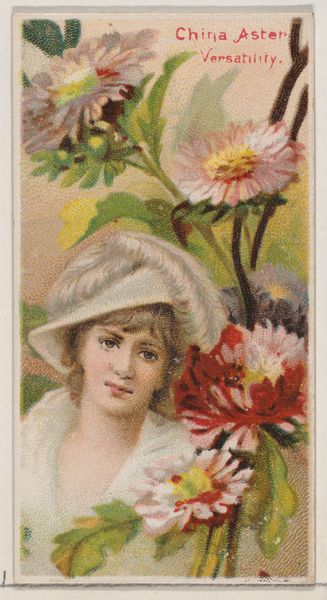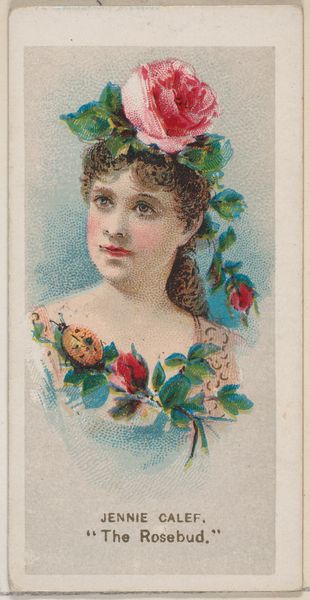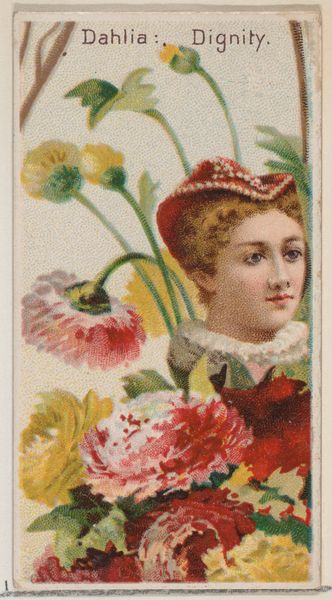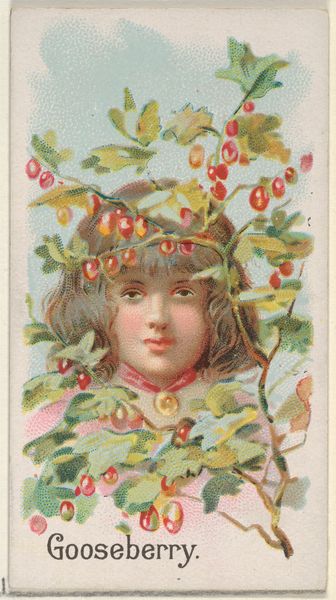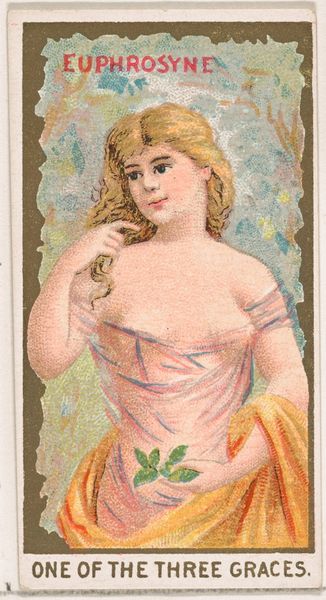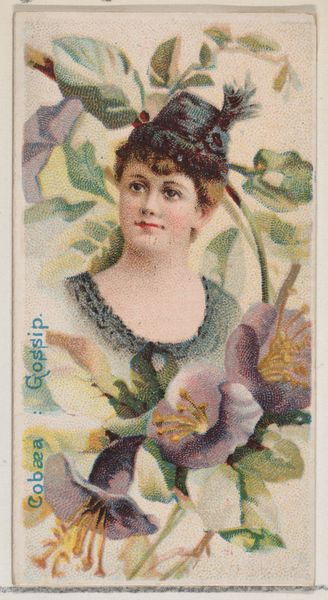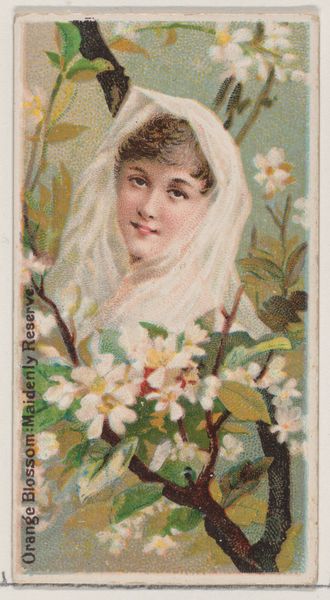
Jack Rose: Bashful Love, from the series Floral Beauties and Language of Flowers (N75) for Duke brand cigarettes 1892
0:00
0:00
drawing, coloured-pencil, print
#
portrait
#
drawing
#
art-nouveau
#
coloured-pencil
# print
#
figuration
#
coloured pencil
#
watercolour illustration
#
genre-painting
#
decorative-art
Dimensions: Sheet: 2 3/4 × 1 1/2 in. (7 × 3.8 cm)
Copyright: Public Domain
Curator: Here we have a print titled "Jack Rose: Bashful Love, from the series Floral Beauties and Language of Flowers (N75) for Duke brand cigarettes," dating back to 1892. It resides here at the Metropolitan Museum of Art. Editor: Well, it's charming, I’ll say that much. The soft focus and muted tones create this dreamy, idealized image. Is it meant to represent an actual person, or is she an allegorical figure? Curator: As a trade card issued by the American Tobacco Company, its primary purpose was to sell cigarettes. The “Floral Beauties” series uses flowers as symbols – in this case the Jack Rose variety to represent “Bashful Love,” linking the advertised product to ideas of beauty and romance. The production is actually quite fascinating, using a now obsolete process of color lithography. It brings into question mass consumption of idealized beauty and sentimental ideals of feminine representation through print materials of the era. Editor: Right, so the rose takes on this almost…encoded meaning? The woman's gaze certainly carries that demure, "bashful" quality. The roses mirror that, softly unfolding but not fully open. Curator: Precisely. And not only that, but what it implies for labor behind this collectible form, something mass produced. And if "bashful love" has any implication with the tobacco. A pleasurable love to keep to oneself? It brings forward questions about advertisement, how symbols can be manipulative depending on the commodified and capitalized intentions. Editor: Yes! These visual codes offer a shorthand for complex emotions. Looking closer, it is rendered using colored pencils; so, the choice of materials almost reinforces the fragility or delicacy inherent in that emotion represented by roses. And its integration to gender during that time of marketing? Curator: An interesting note given how heavily the industrial manufacturing and distribution system are implemented behind something made in pencils, no? What’s your take on this woman's features and expressions within the context of tobacco capitalism and floral iconography? Editor: It makes me wonder about how ephemeral emotions or gestures, when linked with commercial goods, gain a kind of permanence, but are nonetheless tied to the cycles of production and consumption, isn't it ironic? Curator: Absolutely, that constant back-and-forth between tangible object, cultural meanings, production practice that all comes in a seemingly harmless promotional collectible makes us really question what that implies to a society who indulges in such production systems and the art made to be promotional materials. Editor: Indeed, it shows how powerful seemingly "throwaway" images can be and the social structures which create its impact and meaning in the current culture.
Comments
No comments
Be the first to comment and join the conversation on the ultimate creative platform.
